Sister Society: Association Internationale Jacques Ellul
Sister Society: Association Internationale Jacques Ellul
By David Lovekin
Jacques Ellul (1912-1994) was a critic of technology and its effects on human life and culture from the eighteenth century through the twentieth century. He found human freedom at stake in technology’s advance. Moving beyond Marx’s critique of alienated labor in the workplace, Ellul argued that technology’s influence was extensive. Typically the artist is considered the archetype of free will and expression in whatever society he or she lived, but technology has subverted that role. The artist now contributes to a technological enslavement as the symbol, a key to human freedom, is denigrated. Art hides this subversion and loss through pleasurable distractions and appeasements. Throughout Ellul’s writing, the loss of the symbol and the power of the word is a concern.
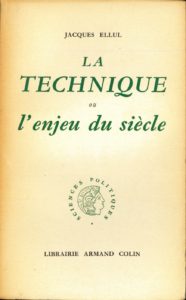 Ellul began his critique of technology in La Technique ou l’enjeu du siècle[1] (1954) by showing that technique (la technique) was a mentality, a way of viewing the so-called objective world that had lost its objective validity. That world was no longer a source of wisdom and inspiration, a welcoming but sometimes terrifying landscape, a place chosen—or created—by higher beings or forces. The world became a problem to be solved, an equation to be balanced, a text to be interpreted, ad infinitum. The essence of being was to be found and determined, whether natural, social, or celestial, according to a mathematics-like methodology and a strict logic eschewing the demons of contradiction.[2] The traditional guides for matters of being and essence no longer sufficed. Philosophy, religion, and art still reached for the transcendental beyond the sensory that eluded simple weight or measure. And yet there were cracks in this assumed objectivity.
Ellul began his critique of technology in La Technique ou l’enjeu du siècle[1] (1954) by showing that technique (la technique) was a mentality, a way of viewing the so-called objective world that had lost its objective validity. That world was no longer a source of wisdom and inspiration, a welcoming but sometimes terrifying landscape, a place chosen—or created—by higher beings or forces. The world became a problem to be solved, an equation to be balanced, a text to be interpreted, ad infinitum. The essence of being was to be found and determined, whether natural, social, or celestial, according to a mathematics-like methodology and a strict logic eschewing the demons of contradiction.[2] The traditional guides for matters of being and essence no longer sufficed. Philosophy, religion, and art still reached for the transcendental beyond the sensory that eluded simple weight or measure. And yet there were cracks in this assumed objectivity.
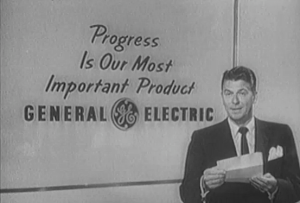 The so-called natural resources were limited, unaware or uninterested, in technical demands. Populations did not necessarily agree in a number of premises: that ends justified means; that ends were reducible to means; that anxiety and depression should be the price of progress; that cancer was the acceptable collateral damage for cigarette sales and profitability. What means progress? My ambiguity here is intentional. We might remember General Electric (GE) Theater and host Ronald Reagan, in the 1950s, announcing that “Progress is our most important product.” Reagan also sold arms to the Contras.
The so-called natural resources were limited, unaware or uninterested, in technical demands. Populations did not necessarily agree in a number of premises: that ends justified means; that ends were reducible to means; that anxiety and depression should be the price of progress; that cancer was the acceptable collateral damage for cigarette sales and profitability. What means progress? My ambiguity here is intentional. We might remember General Electric (GE) Theater and host Ronald Reagan, in the 1950s, announcing that “Progress is our most important product.” Reagan also sold arms to the Contras.
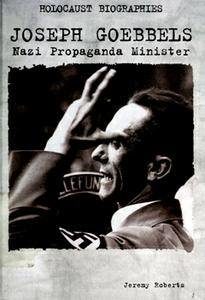 Ellul took his critique of technology to the dimension of language and representation in L’illusion politique[3] (1965) and Propagandes[4] (1962) with the understanding that propaganda was used to mend some cracks. Although, in fact, Hitler lost the war, Ellul proclaimed, that, in truth, he won the war (i.e. no modern state could proceed without the management of technologies and the control of public opinion).[5] Hitler understood that once poison gas was introduced, it would become a necessity, and that a lie told often enough became the truth as the product of a mass media.[6] Can this be truth? Does truth have a methodology? How does Ellul discover the truth of Hitler’s victory? By simply recounting fact?
Ellul took his critique of technology to the dimension of language and representation in L’illusion politique[3] (1965) and Propagandes[4] (1962) with the understanding that propaganda was used to mend some cracks. Although, in fact, Hitler lost the war, Ellul proclaimed, that, in truth, he won the war (i.e. no modern state could proceed without the management of technologies and the control of public opinion).[5] Hitler understood that once poison gas was introduced, it would become a necessity, and that a lie told often enough became the truth as the product of a mass media.[6] Can this be truth? Does truth have a methodology? How does Ellul discover the truth of Hitler’s victory? By simply recounting fact?
At issue is the meaning of meaning, a problem basic to human experience and perhaps to humanity’s original attempt to gain control in a hunt by painting pictures of animals on cave walls. Although art and religion suffered the fate of the ruffled sunshade of McCormick’s first reaper (Ellul’s metaphor)[7], becoming mere decorations, if appearing at all, individuals in a technological society faced a similar fate. Ellul continued his critique in L’empire du non-sens[8] (1980) and finally in La parole humiliée[9] (1981) to the realms of art and religion. He asked us to consider basic human experience.
 We see, point, and gesture to what is before us. What is there is what is. “It is not ambiguous; it is coherent, reliable, inclusive; but it is insignificant.” [10] What we see is spatial but not temporal and, thus, is without meaning. It is neither true nor false. We can, however, give what we see a name and walk around the object uttering words, but now we give coherence and inclusiveness meaning and bring in ambiguities and contradictions that make truth possible. Is it raining or sprinkling or shedding God’s tears? The word, first spoken or uttered silently, is personal, then public, and then ambiguous. It is in the domain that surrounds. Ambiguity suddenly is part of meaning. The word and the image indicate two basic directions of meaning in mutual capacity. I cannot see an object to be both red and blue but I can say it is.[11] Connecting images makes meaning and judgment possible in moments of time that produce the symbol. Sight becomes insight with the symbol. The image requires the word that enables symbolic reference that is and is not the symbol. A flag may symbolize a country but is not that country. The symbol invites controversy, dialogue, and interpretation. Myths, for example, become texts that need to be retold, but in the telling there is a danger. Symbols invite decadence, a loss of the opposition that makes them possible. When the flag becomes a country, when the text is, literally, a god’s word, meaning collapses and becomes what Ellul called a sacred.[12] The truth as ambiguous requires vigilance.
We see, point, and gesture to what is before us. What is there is what is. “It is not ambiguous; it is coherent, reliable, inclusive; but it is insignificant.” [10] What we see is spatial but not temporal and, thus, is without meaning. It is neither true nor false. We can, however, give what we see a name and walk around the object uttering words, but now we give coherence and inclusiveness meaning and bring in ambiguities and contradictions that make truth possible. Is it raining or sprinkling or shedding God’s tears? The word, first spoken or uttered silently, is personal, then public, and then ambiguous. It is in the domain that surrounds. Ambiguity suddenly is part of meaning. The word and the image indicate two basic directions of meaning in mutual capacity. I cannot see an object to be both red and blue but I can say it is.[11] Connecting images makes meaning and judgment possible in moments of time that produce the symbol. Sight becomes insight with the symbol. The image requires the word that enables symbolic reference that is and is not the symbol. A flag may symbolize a country but is not that country. The symbol invites controversy, dialogue, and interpretation. Myths, for example, become texts that need to be retold, but in the telling there is a danger. Symbols invite decadence, a loss of the opposition that makes them possible. When the flag becomes a country, when the text is, literally, a god’s word, meaning collapses and becomes what Ellul called a sacred.[12] The truth as ambiguous requires vigilance.
Ellul understood that the methods and means of technology had been created by reducing reason and experience to the dimension of the image just described. The true cannot be both true and not true for the technological mentality, but in truth it can be and is. In fact, it cannot. It is true that an object can appear white at noon and orange at sunset. The truth is not simply one of the appearances. Significance is accomplished by memory and imagination and are bases for intelligence.[13] We can, with our experiences, form a concept of the absorption of light. The concept, a process of abstraction, is not one of appearances but is constructed from them. The technical phenomenon is the embodiment of such an abstraction. The mentality of technique forgets the operations that made the concept possible. Ellul clarifies the central notion of technical rationality this way:
“. . . first the use of “discourse” in every operation under the two aspects this term can take (on the one hand, the interventions of intentional reflection, and, on the other hand, the intervention of means from one term to the other); this excludes spontaneity and personal creativity. Second, there is the reduction of method to its logical dimension alone. Every intervention of technique is, in effect, a reduction of facts, forces, phenomena, means and instruments to the schema of logic.”[14]
 Suppose we want to level the trees in a forest. The trees are different, and competency with an axe is at a premium. But if a “one best way” is sought, a chain saw could result, and then a bulldozer, and then roads to haul the machine, and then accident insurance.[15] The differences of the trees and the wielder of the axe are canceled. What can be done, will be done, Ellul explained, regardless of aesthetic/religious consideration.[16] Thor’s hammer, Mjölnir, is unavailable, although its power lurks in the recesses of symbol and legend.
Suppose we want to level the trees in a forest. The trees are different, and competency with an axe is at a premium. But if a “one best way” is sought, a chain saw could result, and then a bulldozer, and then roads to haul the machine, and then accident insurance.[15] The differences of the trees and the wielder of the axe are canceled. What can be done, will be done, Ellul explained, regardless of aesthetic/religious consideration.[16] Thor’s hammer, Mjölnir, is unavailable, although its power lurks in the recesses of symbol and legend.
The original transformation using “reason” to produce technical phenomena in the elusive name of efficiency is forgotten. We should remember how much we owe. Efficiency becomes a march of means that has no meaning beyond the march. The true merely appears in its repetition, which then becomes false. Technique forgets the meanings of the natural and social worlds made originally by the symbols in cave paintings, by the arts of architecture honoring the Christian God in cathedrals, by the canvases with pictures of land, animals, and extravagant furnishings giving the eighteenth and nineteenth century bourgeoisie a sense of power through ownership.[17] These symbols, though not efficient, encouraged action and community. Faced with the ambiguity of artistic symbols, technique has moved them to museums and to the purviews of critics.

In The Empire of Nonsense, Ellul argued that art no longer exists because the symbol is not present, because technology has become art and cannot be symbolized.[18] It is simply the universal methods of whatever means may be brought to task with the mentality of technique and the system that it produces. Meaning is reduced to “one more moment” or to a “not yet.”[19] Clearly, we no longer know what art is. Painting can be realistic and representational or figurative and abstract; music can be made on traditional or electronic instruments, or it can be thirty minutes of silence; musicians may even destroy their instruments. Novelists may write words attacking the very possibility of meaning and language or they may write screen and stage plays. All traditions are possible and yet meaningless at the same time. Thus, art has no meaning with no limits. It embodies n/import quoi, or “Whatever.”[20]

Walter Raushenberg, Barge
Ellul notes that Robert Raushenberg, the father of Pop Art, said: “I am for art but for art that has nothing to do with art. Art has everything to do with life but nothing to do with art.”[21] But what life, Ellul asks? The life where repetition becomes beauty, goodness, and truth like Warhol’s soup cans or Raushenberg’s comic strips? Modernist art (Ellul’s direct concern) has two courses—art with a message or art with some kind of propaganda that justifies the state, the artist, or technique. Thus, these symbols collapse into what they refer and are not symbolic; as images they are what they are and nothing more, and therefore they do not refer. Myths invite retelling because of the open-ended nature of words and symbols, but this is not the repetition so often a part of modernist art and advertising, often inseparable. The Campbell soup can that can be repeated is not a story to be retold. It is a gasp in absence of a narrative.[22]
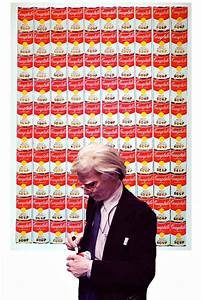
Andy Warhol
Ellul is much interested in modernist critics because art becomes theory, making no common sense or any sense. The object is co-opted by the concept that is an abstraction without content or structure.[23] Abraham Moles is clear: “If the world is full of beautiful things, the critic will be transformed into an artist as soon as he puts a framework around a random piece of macadam with an infallible gaze that assigns aesthetic value…. The definition of the beautiful is based on statistics concerning the Beautiful.”[24] It is so because of the critic’s words that are validated by statistics, assuming that people would believe the critic’s claim. This is metaphysics without argument. A is simply A, no disagreement allowed. Ellul recalled the decline of the great painter Dubuffet: “He plunges into the ‘unnamable’ with streams of paint, asphalt, filth, confusion, and the formless. He dislodges as matter itself is dislodged.”[25]
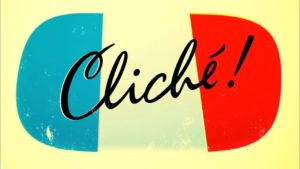 Painters want to paint the essence of painting: a pure white canvas, perhaps, to give the object a meaning it does not apparently have. Or art is formalistic, moving to the abstract, the geometrical, the mathematical, again exhibiting the preferences of a technical mentality. Moles takes both positions at once. And the triumph of the image furthers these clichés, that is, symbols that are not symbols. “Cliché” was referred to a printer’s dab and perhaps to the sound striking the dab. “Cliché” now is simply a worn out expression, a symbol that is no symbol, unless reclaimed, remembered and imaginatively encountered. The cliché is the machine in its new suit, to revive the metaphor. The self and the object collapse into images; technology does not symbolize. The need for art is satisfied by the cellphone “selfie” in the company of “friends,” versions of us worshiping at the church of everyone with the same enemies and values comforted by a god in the mirror. No need to reach. Art is the veil that hides the malaise and the compensation that distracts to sooth the anxiety.
Painters want to paint the essence of painting: a pure white canvas, perhaps, to give the object a meaning it does not apparently have. Or art is formalistic, moving to the abstract, the geometrical, the mathematical, again exhibiting the preferences of a technical mentality. Moles takes both positions at once. And the triumph of the image furthers these clichés, that is, symbols that are not symbols. “Cliché” was referred to a printer’s dab and perhaps to the sound striking the dab. “Cliché” now is simply a worn out expression, a symbol that is no symbol, unless reclaimed, remembered and imaginatively encountered. The cliché is the machine in its new suit, to revive the metaphor. The self and the object collapse into images; technology does not symbolize. The need for art is satisfied by the cellphone “selfie” in the company of “friends,” versions of us worshiping at the church of everyone with the same enemies and values comforted by a god in the mirror. No need to reach. Art is the veil that hides the malaise and the compensation that distracts to sooth the anxiety.
[1] Jacques Ellul, La technique ou l’enjeu siècle (Paris:Armand Colin, 1954), hereinafter cited as La technique. The Technological Society, trans. John Wilkinson (New York: Alfred A. Knopf, 1964), hereinafter cited as TS.
[2] Ibid, xxv.
[3] Jacques Ellul, L’illusion politique, (Paris: Robert Laffont, 1965). The Political Illusion, trans. Konrad Kellen (New York: Alfred A. Knopf, 1967).
[4] Jacques Ellul, Propagandes, (Paris: Armand Colin,1962). Propaganda, trans. Konrad Kellen (New York: Alfred A. Knopf, 1965).
[5] Jacques Ellul, “Victoire d’Hitler?” Reforme 14 (1945), 2.
[6] TS, 84.
[7] TS. 74.
[8] Jacques Ellul, L’empire du non-sens: L’art et la société technicienne (Paris: Universitaires de France, 1980). The Empire of Nonsense: Art in the Technological Society, trans. Michael Johnson and David Lovekin (Berkshire, UK: Papadakis, 2014), hereinafter cited as Empire.
[9] Jacques Ellul, la parole humiliée (Paris: Ediions du Seuil, 1981). The Humiliation of the Word, trans. Joyce Main Hanks (Grand Rapids: Eerdmans, 1985), hereinafter cited as Word. (New edition forthcoming in 2019.)
[10] Ibid., 8.
[11] Ibid., n. 3, 11.
[12] For an extended discussion of the symbol and politics, see my “Jacques Ellul, the Symbol, and the Political Illusion,” in Political Illusion and Reality: Engaging the Prophetic Insights of Jacques Ellul, eds. David W. Gill and David Lovekin (Eugene, OR: Pickwick Publications, 2018), 137-150.
[13] Word, 257.
[14] La technique, 74, my translation.
[15] See TS, 77-147 and my further discussion of these Technique, Discourse, and Consciousness: An Introduction to the Philosophy of Jacques Ellul by David Lovekin (Bethlehem, PA: Lehigh University Press, 1991), 152-187, hereinafter cited as TDC.
[16]TS, See Ellul’s discussion of Monism, 94-111. He states: “Use is inseparable from being.”(p. 95)
[17] See Empire, 46.
[18] Empire, 66.
[19] I develop this notion of a bad infinity further in TDC, 98-105.
[20] Ibid., 59-60.
[21] Ibid., 49.
[22] In an interview, Warhol stated: “The reason I’m painting this way is that I want to be a machine, and I feel that whatever I do and do machine-like is what I want to do.” Interview with Gene Swenson, in Art in Theory. 1900-200. An Anthology of Changing Ideas, eds. Charles Harrison & Paul Wood (Malden, MA: Blackwell Publishing, 2003), 748.
[23] Empire, 71-80.
[24] Ibid., 135-136.
[25] Ibid., 78.a.